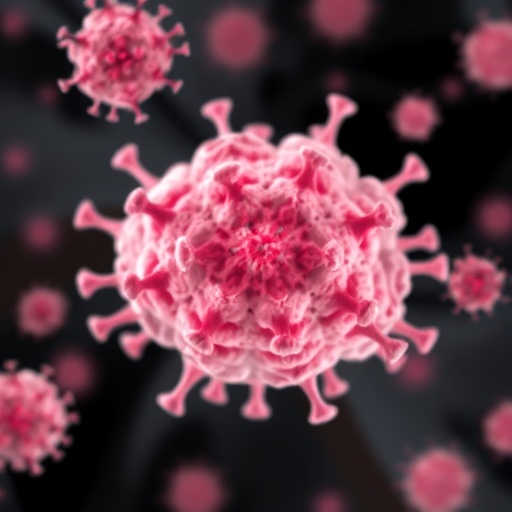
In a groundbreaking study published in npj Parkinson’s Disease, researchers have uncovered a striking biochemical alteration in the brains of individuals affected by Parkinsonâs disease (PD). The investigation reveals that elevated levels of hexosylceramidesâa class of complex sphingolipidsâplay a pivotal role in driving gene expression changes in neurons that strikingly resemble immune responses typically invoked by pathogen exposure. This discovery not only enriches our understanding of the molecular underpinnings of Parkinsonâs disease but also offers a tantalizing glimpse into how the nervous systemâs interaction with lipid metabolism might influence neurodegeneration.
Hexosylceramides, part of the broader sphingolipid family, are crucial structural components of cell membranes and participate actively in cellular signaling pathways. Unlike other lipids, these molecules are known to modulate processes ranging from cell differentiation to apoptosis. The scientists behind this research have now demonstrated that in the context of Parkinsonâs disease, the abnormal accumulation of hexosylceramides is far from a mere biochemical footnote; it fundamentally reshapes the transcriptional landscape of neurons, skewing it toward what looks like a defensive state against microbial insults.
The study employed advanced lipidomic analyses alongside transcriptomic profiling of neuronal cultures exposed to elevated hexosylceramide levels. These neurons exhibited upregulated gene pathways typically associated with innate immune responses. Notably, genes involved in pathogen recognition, inflammatory signaling cascades, and antiviral defenses were markedly activated. This suggests that neurons in PD may enter a pseudo-immune state, potentially contributing to neuronal distress and degeneration through chronic inflammatory signaling.
Historically, Parkinsonâs disease has been characterized by the progressive loss of dopaminergic neurons in the substantia nigra, leading to the hallmark motor symptoms of tremors, rigidity, and bradykinesia. While numerous hypotheses have sought to explain the triggers of neurodegenerationâincluding mitochondrial dysfunction, protein aggregation, and oxidative stressâthis study adds an unforeseen dimension: the role of lipid perturbations capable of reprogramming neuronal gene expression toward an immune-like phenotype.
The researchers further validated their findings through comparisons with postmortem brain tissue from PD patients. Consistent with the in vitro results, patient-derived neuronal samples showed elevated hexosylceramide concentrations and corroborating gene expression patterns. This correlative evidence reinforces the physiological relevance of hexosylceramide-induced gene upregulation in the diseased brain environment.
One of the most fascinating implications of this research is its challenge to the classical neuron-centric model of Parkinsonâs disease. By highlighting the intersection between lipid metabolism and innate immune responses within neurons themselves, the study suggests that neurodegenerative processes may stem partially from aberrant self-defense mechanisms. In effect, neurons might mistakenly âthinkâ they are under attack by pathogens, activating inflammatory genes that inadvertently exacerbate cellular damage.
Mechanistically, the elevation of hexosylceramides could arise from dysfunctional lysosomal degradation pathways or impaired sphingolipid metabolism, both processes previously implicated in PD. The accumulation of these lipids could act as signaling platforms, recruiting protein complexes that initiate transcriptional programs similar to those activated upon infection. Understanding precisely how hexosylceramide triggers these pathways will be critical for future therapeutic developments.
Importantly, the upregulation of pathogen-responsive genes in neurons does not necessarily imply the presence of infectious agents in Parkinsonian brains. Rather, it posits a scenario wherein metabolic disturbances mimic pathogen-associated molecular patterns (PAMPs), falsely activating cellular defense circuits. This molecular mimicry could create a vicious cycle of neuronal stress and inflammation, bridging metabolic irregularities with immune dysregulation in neurodegeneration.
The study also opens intriguing questions about the role of the brainâs immune microenvironment, including glial cells and infiltrating immune cells. Although the focus was on neuronal responses, the interplay between lipid-driven neuronal immune signatures and glial activation remains a promising avenue for exploration. Such crosstalk could potentiate neuroinflammation and accelerate disease progression.
Therapeutically, targeting sphingolipid metabolism and specifically hexosylceramide biosynthesis or degradation presents a novel angle for Parkinsonâs disease intervention. Modulating these pathways might dampen inappropriate gene activation and alleviate chronic neuronal inflammation. However, given the essential functions of sphingolipids in normal physiology, such strategies will require precision to avoid unintended consequences.
The studyâs findings have broader implications beyond Parkinsonâs disease. Sphingolipid dysregulation and aberrant immune signaling have been observed in other neurodegenerative disorders, including multiple sclerosis and Alzheimerâs disease. The concept that neurons can intrinsically adopt pathogen-response-like states driven by lipid imbalances could represent a fundamental principle in neurodegeneration, warranting extensive investigation.
Moreover, this research exemplifies the power of integrative omics approaches, combining lipidomics and transcriptomics to illuminate complex disease mechanisms. Future work leveraging single-cell sequencing, spatial transcriptomics, and advanced metabolomics could dissect how hexosylceramide-related gene upregulation varies among neuronal subtypes and disease stages, refining our understanding of Parkinsonâs pathophysiology.
In addition to its scientific relevance, this study offers a compelling narrative on the unexpected molecular dialogs within neurons. The idea that neuronal identity includes latent immune functionalities, awakened by metabolic cues, challenges traditional boundaries between neurobiology and immunology. This intersection may redefine how we conceptualize brain health and the molecular triggers of neurodegeneration.
Beyond the biological insights, the discovery of hexosylceramideâs role in PD pathogenesis presents an opportunity for biomarker development. Measuring hexosylceramide levels in cerebrospinal fluid or blood could provide minimally invasive diagnostic tools or help monitor disease progression and therapeutic response. Early detection based on lipid signatures might transform clinical management of Parkinsonâs disease.
Finally, the study invites a reconsideration of environmental and lifestyle factors influencing lipid metabolism as potential modulators of neurodegenerative risk. Dietary sphingolipids, lipid-lowering agents, and metabolic health all intersect with the pathways implicated here, offering a translational bridge from molecular findings to public health strategies.
As our life expectancy rises and neurodegenerative diseases become increasingly prevalent, uncovering the molecular intricacies underlying disorders such as Parkinsonâs disease is more urgent than ever. The elucidation of hexosylceramide-induced gene regulation pathways not only advances the frontiers of neurological research but also heralds new possibilities for therapeutic innovation aimed at stemming the tide of neuronal loss.
This landmark study by Franck et al. thus stands as a testament to the evolving comprehension of Parkinsonâs disease, transforming previously isolated metabolic phenomena into dynamic biological processes capable of reshaping neuronal fate in the diseased brain.
Subject of Research: Biochemical and gene expression alterations in Parkinsonâs disease neurons driven by elevated hexosylceramides.
Article Title: Elevated hexosylceramides in Parkinsonâs disease cause gene upregulations in neurons mimicking responses to pathogens.
Article References:
Franck, L., Hahnefeld, L., Valek, L. et al. Elevated hexosylceramides in Parkinsonâs disease cause gene upregulations in neurons mimicking responses to pathogens. npj Parkinsons Dis. 11, 268 (2025). https://doi.org/10.1038/s41531-025-01114-9
Image Credits: AI Generated
Tags: advanced lipidomic analysesbiochemical alterations in PDcell signaling in neurodegenerationcomplex lipids and neuronal healthHexosylceramides in Parkinson’s diseaseimmune response in neurodegenerationlipid metabolism and neurodegenerationneuroinflammation and Parkinsonâs diseaseneuronal gene expression changespathophysiology of Parkinsonâs diseasesphingolipids and brain healthtranscriptomic profiling in Parkinsonâs research




